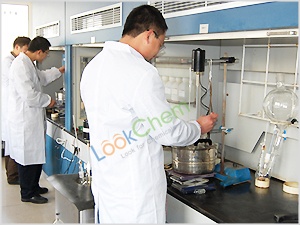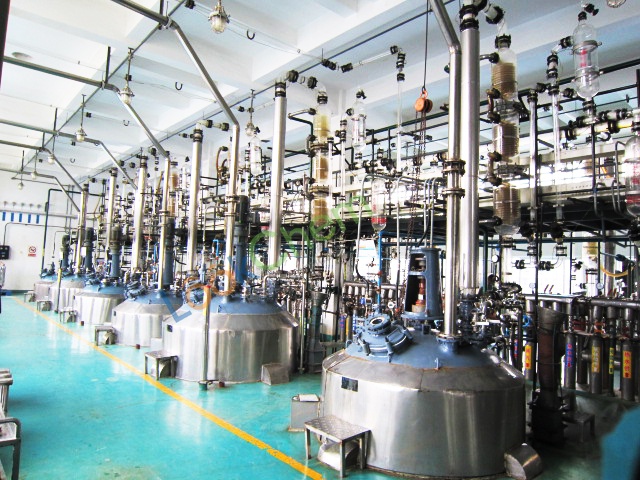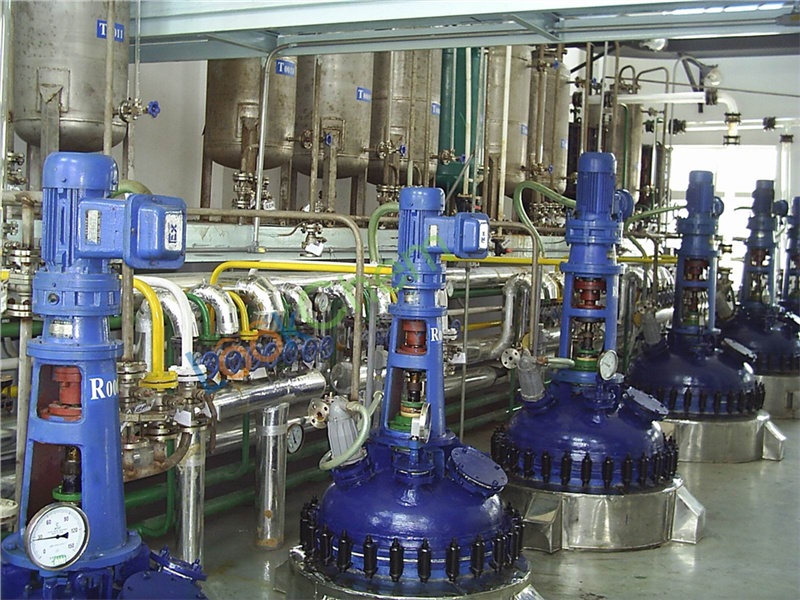Carbenicillin sodium msds
- Product Details
- Company Profile
The following MSDS detailed information are provided by Nanjing Aily Biotechnology Co., Ltd, one specialized Carbenicillin sodium supplier in China.
Section 1 - Chemical Product and Company Identification
MSDS Name: Carbenicillin sodium
Catalog Numbers: BP2648-1, BP2648-250, BP2648-5
Synonyms: Disodium Carbenicillin; Disodium Alpha-Carboxybenzylpenicillin; Fugacillin.
Section 2 - Composition, Information on Ingredients
CAS#
4800-94-6
Chemical Name
Carbenicillin sodium
Percent
ca 100
EINECS/ELINCS
225-360-8
Section 3 - Hazards Identification
Appearance: almost white solid.
Warning! Individuals with allergies or hypersensitivity to antibiotics should take caution. May cause allergic respiratory and skin reaction. May cause eye, skin, and respiratory tract irritation.
Target Organs: Respiratory system, skin.
Potential Health Effects
Eye: May cause eye irritation.
Skin: May cause skin irritation. May cause skin sensitization, an allergic reaction, which becomes
evident upon re-exposure to this material. May cause skin rash and eruptions.
Ingestion: May cause irritation of the digestive tract. Ampicillin (a penicillin class antibiotic)
exposure may cause adverse effects in certain individuals. These can include; central nervous
system toxicity (including hallucinations, confusion, unconsciousness, and seizures),
hypersensitivity reactions, and blood cell
Inhalation: May cause allergic respiratory reaction. May cause respiratory tract irritation.
Chronic: No information found.
Section 4 - First Aid Measures
Eyes: Immediately flush eyes with plenty of water for at least 15 minutes, occasionally lifting
the upper and lower eyelids. Get medical aid.
Skin: Immediately flush skin with plenty of water for at least 15 minutes while removing
contaminated clothing and shoes. Get medical aid if irritation develops or persists.
Ingestion: If victim is conscious and alert, give 2-4 cupfuls of milk or water. Do NOT induce vomiting. If conscious and alert, rinse mouth and drink 2-4 cupfuls of milk or water. Get medical aid if irritation or symptoms occur.
Inhalation: Remove from exposure and move to fresh air immediately. If not breathing, give
artificial respiration. If breathing is difficult, give oxygen. Get medical aid.
Notes to Physician: Treat symptomatically and supportively.
Section 5 - Fire Fighting Measures
General Information: Evacuate area and fight fire from a safe distance. As in any fire, wear a self-contained breathing apparatus in pressure-demand, MSHA/NIOSH (approved or equivalent), and full protective gear. During a fire, irritating and highly toxic gases may be generated by thermal decomposition or combustion.
Extinguishing Media: Use water spray, dry chemical, carbon dioxide, or appropriate foam.
Flash Point: Not applicable.
Autoignition Temperature: Not applicable.
Explosion Limits, Lower:Not available.
Upper: Not available.
NFPA Rating: (estimated) Health: 2; Flammability: 0; Instability: 0
Section 6 - Accidental Release Measures
General Information: Use proper personal protective equipment as indicated in Section 8.
Spills/Leaks: Vacuum or sweep up material and place into a suitable disposal container. Clean
up spills immediately, observing precautions in the Protective Equipment section. Avoid generating dusty conditions. Provide ventilation.
Section 7 - Handling and Storage
Handling: Wash thoroughly after handling. Minimize dust generation and accumulation. Avoid contact with eyes, skin, and clothing. Keep container tightly closed. Avoid ingestion and inhalation. Use with adequate ventilation.
Storage: Keep refrigerated.
Section 8 - Exposure Controls, Personal Protection
Engineering Controls: Facilities storing or utilizing this material should be equipped with an eyewash facility and a safety shower. Use adequate ventilation to keep airborne concentrations low.
Exposure Limits
Chemical Name
Carbenicillin sodium
ACGIH
none listed
NIOSH
none listed
OSHA - Final PELs
none listed
OSHA Vacated PELs: Carbenicillin: No OSHA Vacated PELs are listed for this chemical.
Personal Protective Equipment
Eyes: Wear appropriate protective eyeglasses or chemical safety goggles as described by
OSHA's eye and face protection regulations in 29 CFR 1910.133 or European Standard EN166.
Skin: Wear appropriate protective gloves to prevent skin exposure.
Clothing: Wear appropriate protective clothing to prevent skin exposure.
Respirators: Follow the OSHA respirator regulations found in 29 CFR 1910.134 or European
Standard EN 149. Use a NIOSH/MSHA or European Standard EN 149 approved respirator if
exposure limits are exceeded or if irritation or other symptoms are experienced.
Section 9 - Physical and Chemical Properties
Physical State: Solid
Appearance: almost white
Odor: Not available.
pH: Not available.
Vapor Pressure: Not available.
Vapor Density: Not available.
Evaporation Rate:Not available.
Viscosity: Not available.
Boiling Point: Not available.
Freezing/Melting Point:Not available.
Decomposition Temperature:Not available.
Solubility: Not available.
Specific Gravity/Density:Not available.
Molecular Formula:C17H16N2Na2O6S
Molecular Weight:422.1614
Section 10 - Stability and Reactivity
Chemical Stability: Stable at room temperature in closed containers under normal storage and
handling conditions.
Conditions to Avoid: Incompatible materials, dust generation, excess heat.
Incompatibilities with Other Materials: Strong oxidizing agents.
Hazardous Decomposition Products: Nitrogen oxides, carbon monoxide, oxides of sulfur,
oxides of sulfur, carbon dioxide.
Hazardous Polymerization: Has not been reported
Section 11 - Toxicological Information
RTECS#:
CAS# 4800-94-6: ON9105000
LD50/LC50:
CAS# 4800-94-6:
Oral, mouse: LD50 = >12 gm/kg;
Oral, rat: LD50 = >10 gm/kg;
Carcinogenicity:
CAS# 4800-94-6: Not listed by ACGIH, IARC, NTP, or CA Prop 65.
Epidemiology: No information found
Teratogenicity: No information found
Reproductive Effects: No information found
Mutagenicity: No information found
Neurotoxicity: No information found
Other Studies:
Section 12 - Ecological Information
Ecotoxicity: No data available. No information available.
Environmental: No information reported.
Physical: No information available.
Other: None.
Section 13 - Disposal Considerations
Chemical waste generators must determine whether a discarded chemical is classified as a
hazardous waste. US EPA guidelines for the classification determination are listed in 40 CFR Parts
261.3. Additionally, waste generators must consult state and local hazardous waste regulations
to ensure complete and accurate classification.
RCRA P-Series: None listed.
RCRA U-Series: None listed.
Section 14 - Transport Information
US DOT
Canada TDG
Shipping Name:
Not Regulated
Not Regulated
Hazard Class:
UN Number:
Packing Group:
Section 15 - Regulatory Information
US FEDERAL
TSCA
CAS# 4800-94-6 is not listed on the TSCA inventory. It is for research and development use only.
Health & Safety Reporting List
None of the chemicals are on the Health & Safety Reporting List.
Chemical Test Rules
None of the chemicals in this product are under a Chemical Test Rule.
Section 12b
None of the chemicals are listed under TSCA Section 12b.
TSCA Significant New Use Rule
None of the chemicals in this material have a SNUR under TSCA.
CERCLA Hazardous Substances and corresponding RQs
None of the chemicals in this material have an RQ.
SARA Section 302 Extremely Hazardous Substances
None of the chemicals in this product have a TPQ.
Clean Air Act:
No chemicals are reportable under Section 313.
This material does not contain any hazardous air pollutants.
This material does not contain any Class 1 Ozone depletors.
This material does not contain any Class 2 Ozone depletors.
Clean Water Act:
None of the chemicals in this product are listed as Hazardous Substances under the CWA.
None of the chemicals in this product are listed as Priority Pollutants under the CWA.
None of the chemicals in this product are listed as Toxic Pollutants under the CWA.
OSHA:
None of the chemicals in this product are considered highly hazardous by OSHA.
STATE
CAS# 4800-94-6 is not present on state lists from CA, PA, MN, MA, FL, or NJ.
California No Significant Risk Level: None of the chemicals in this product are listed.
European/International Regulations
European Labeling in Accordance with EC Directives
Hazard Symbols:
XN
Risk Phrases:
R 42/43 May cause sensitization by inhalation and skin contact.
Safety Phrases:
S 20 When using do not eat or drink.
S 24/25 Avoid contact with skin and eyes.
S 45 In case of accident or if you feel unwell, seek medical advice
immediately (show the label where possible).
S 28A After contact with skin, wash immediately with plenty of water
.WGK (Water Danger/Protection)
CAS# 4800-94-6: No information available.
Canada - DSL/NDSL
None of the chemicals in this product are listed on the DSL or NDSL list.
Canada - WHMIS
This product has a WHMIS classification of D2A, D2B.
This product has been classified in accordance with the hazard criteria of the Controlled Products
Regulations and the MSDS contains all of the information required by those regulations.
Canadian Ingredient Disclosure List
Verified Supplier
NANJING AILY BIOTECHNOLOGY CO.,LTD
- Country:
 China (Mainland)
China (Mainland) - Business type: Lab/Research institutions
- Integral:


Contact Details|Similar Products

Escrow ServiceMore
Secure Your Orders With escrow More Transparency,Less Uncertainty


 Add to inquiry cart
Add to inquiry cart



